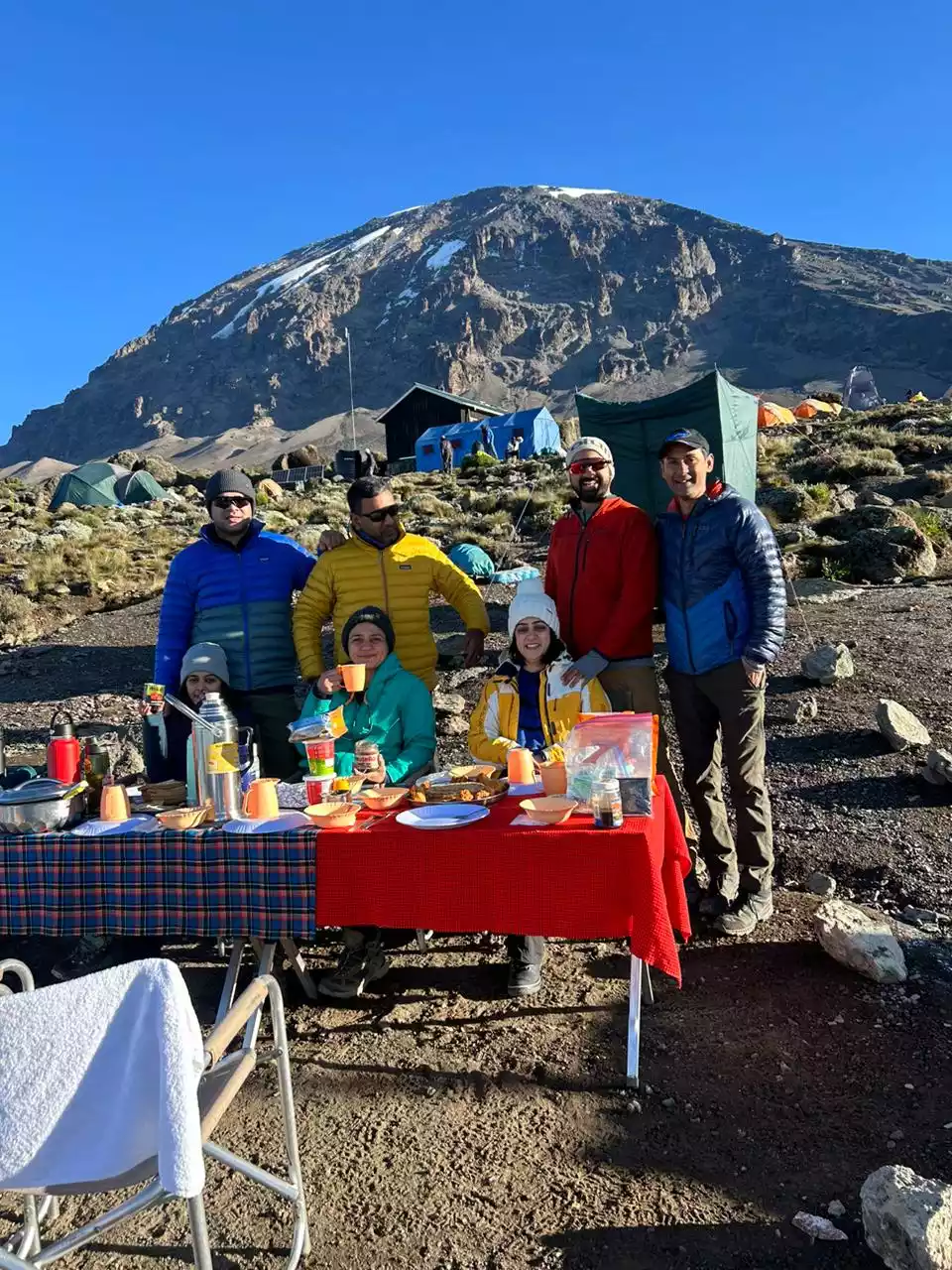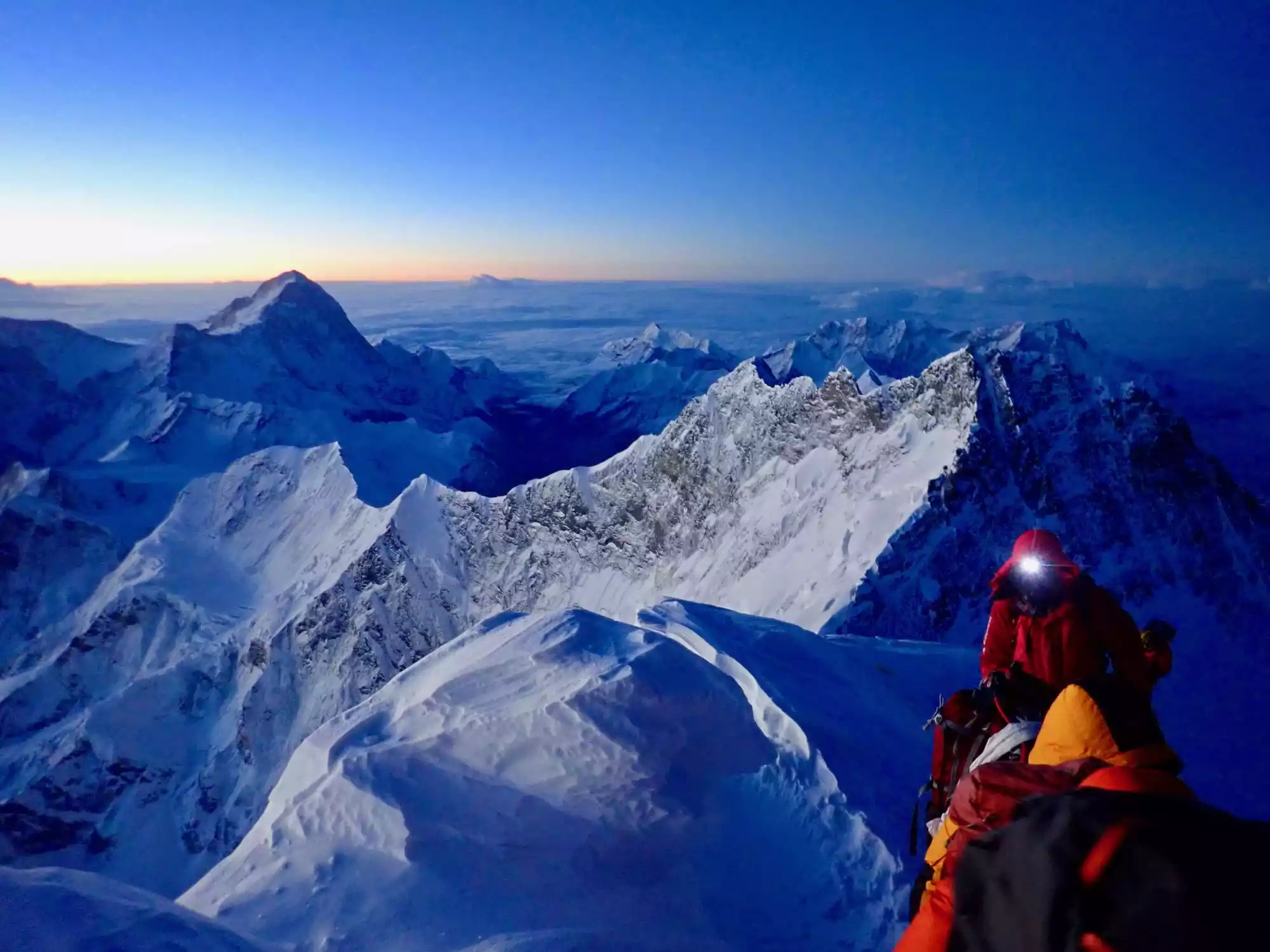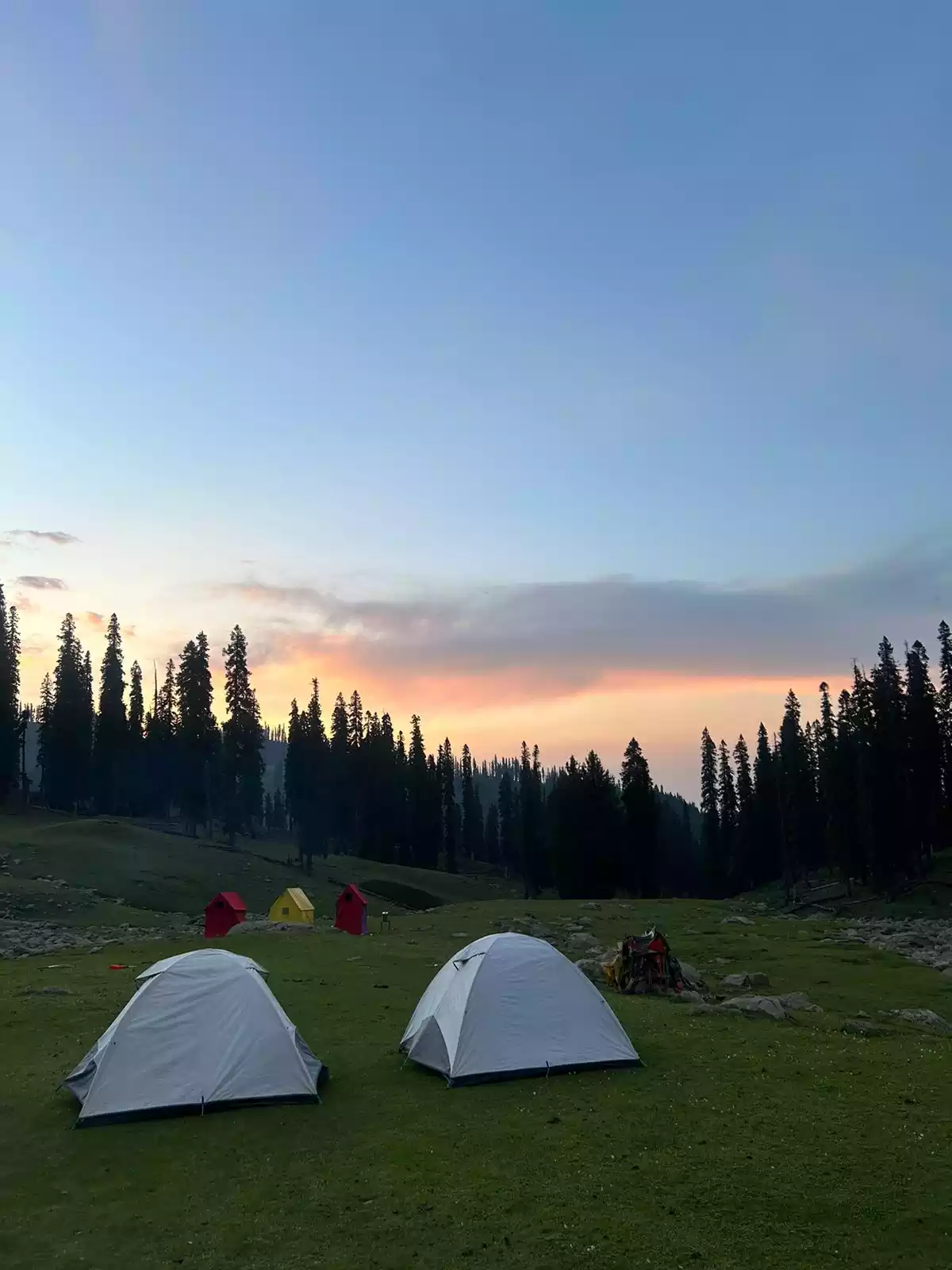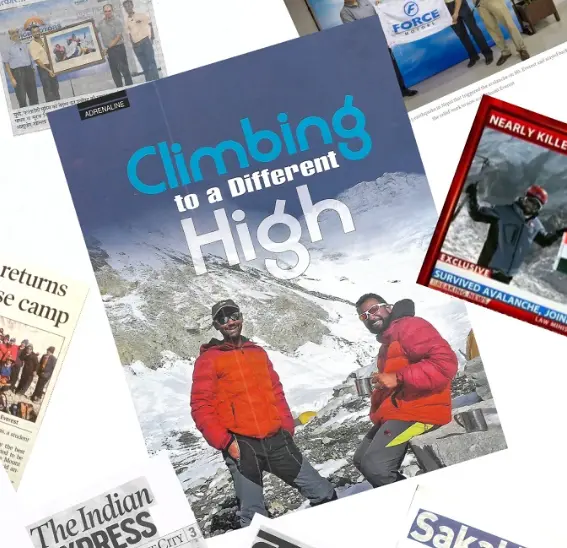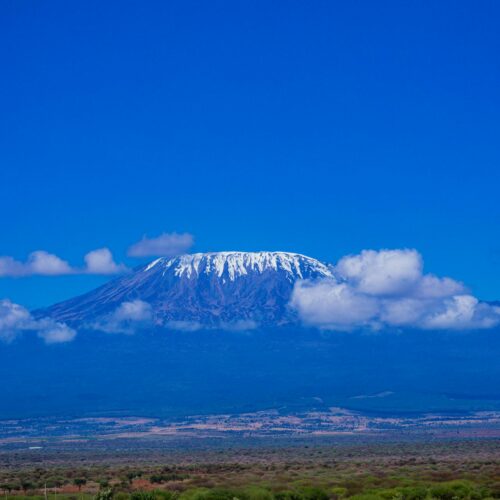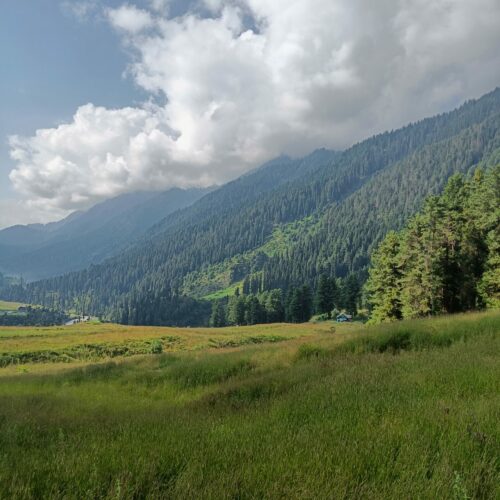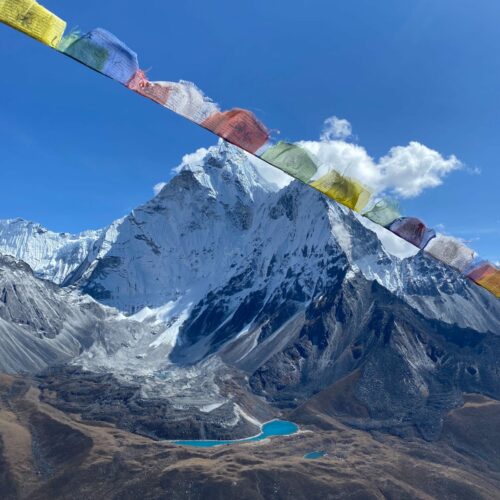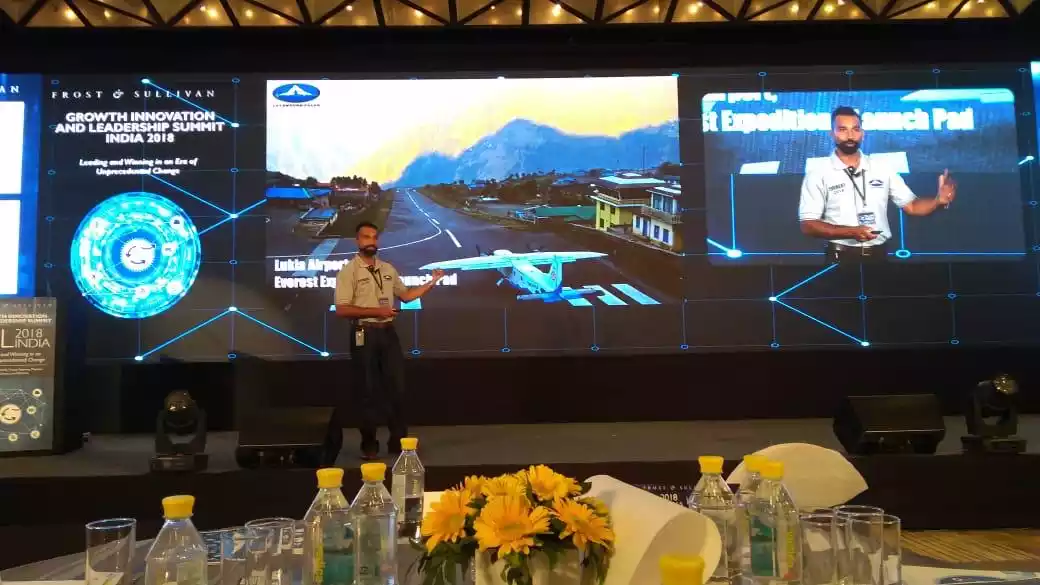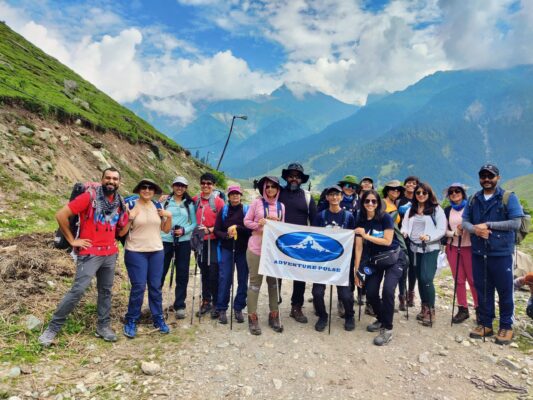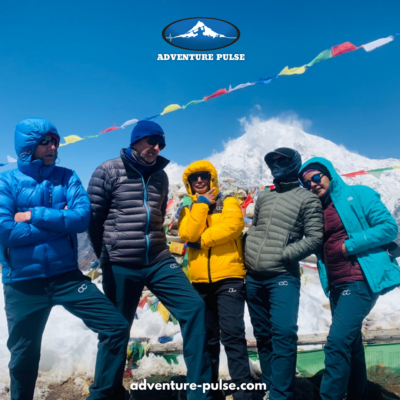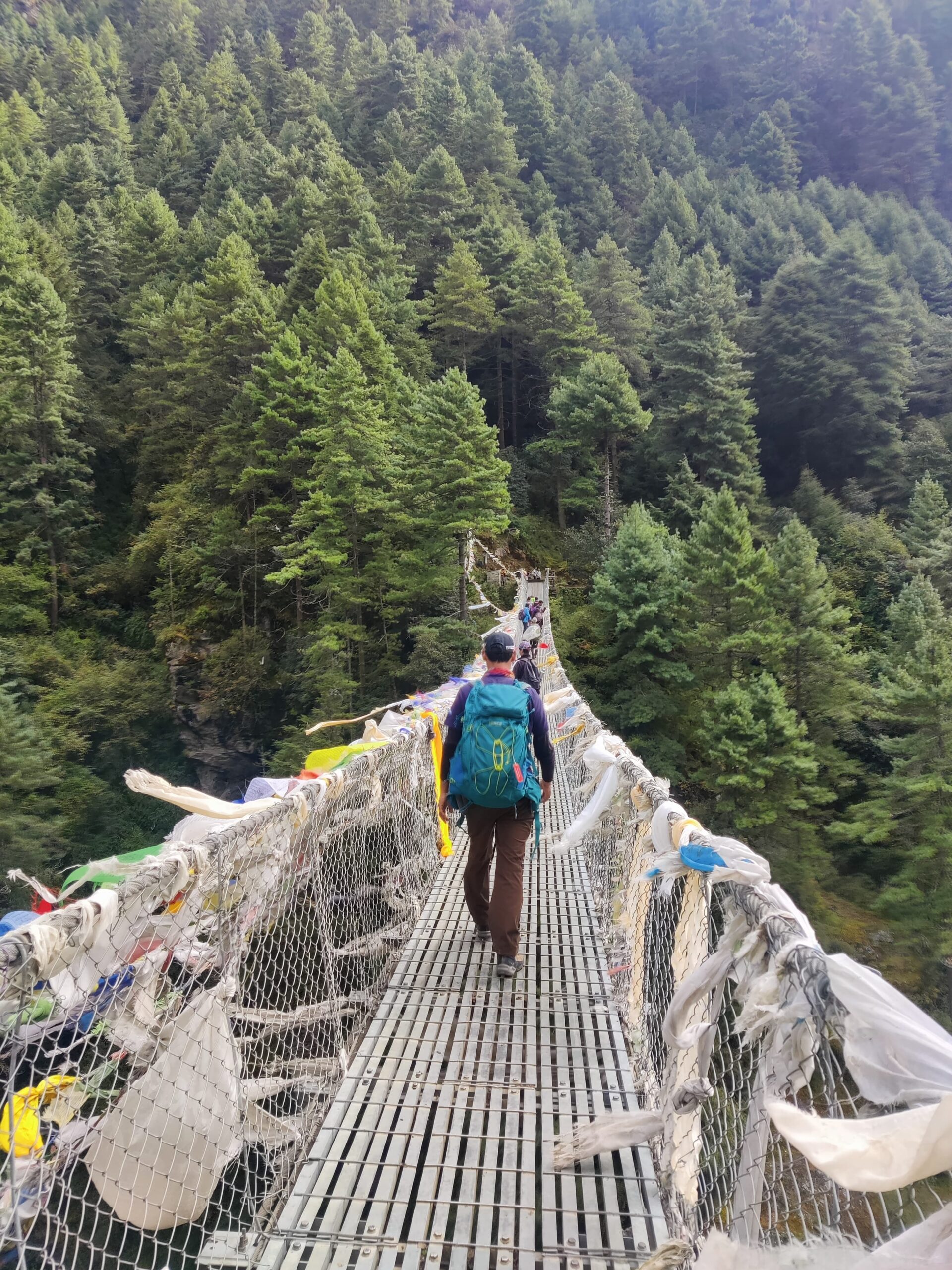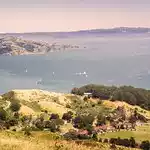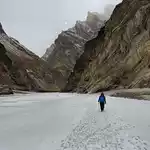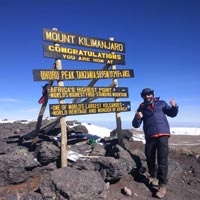Brief Itinerary
- Day 1 - Arrival in Kathmandu
- Day 2 - Rest day + shopping and trek briefing in Kathmandu
- Day 3 - Fly to Lukla (2810) and trek to Phakding (2660m).
- Day 4 - Trek to Namche Bazar (3440m).
- Day 5 - Namche Bazar - Rest and Acclimatization - Hike to Khumjung (3900m).
- Day 6 - Trek to Tengboche / Dibuche (3870m).
- Day 7 - Trek to Dingboche (4252m).
- Day 8 - Dingboche – acclimatization – Hike to Nangakarshang (5010m).
- Day 9 - Trek to Lobuche (4930m).
- Day 10 - Trek to Everest base camp (5360) and stay at Gorakshep
- Day 11 - Trek to Kalapathar (5550m/18208ft) and back to Lobuche village.
- Day 12 - Trek from Lobuche to Lobuche High Camp (5200m/1760ft): Around 4 hours.
- Day 13 - Summit (6119m/20075ft) and back to High Camp
- Day 14 - Buffer Day for the Summit (in case of bad weather)
- Day 15 - Trek to Pheriche
- Day 16 - Trek to Namche Bazaar
- Day 17 - Trek to Lukla
- Day 18 - Fly back to Kathmandu
- Day 19 - Departure from Kathmandu.
Inclusions & Exclusions
Trip Cost Includes:
- Airport pick up and drop
- 3-star hotel accommodation in Kathmandu - 3 nights - twin share basis in Bed and breakfast plan
- Flight fare from Kathmandu - Lukla - Kathmandu for members
- Flight fare from Kathmandu - Lukla - Kathmandu for guides
- Domestic airport departure taxes
- Full board tea house trekking cost with breakfast, lunch, dinner & accommodation
- Guide & Porter salaries
- Trekking/Climbing Permit
- Sagarmatha National Park Permit
- First Aid
- Insurance for Nepali Staff
Trip Cost DOES NOT Include:
- Lunch and dinner in Kathmandu (All meals in Kathmandu except breakfast, welcome and farewell dinners)
- Beverages and alcoholic drinks
- Emergency medical evacuation
- Tips for staffs (mandatory)
- Personal expenses and extra services beyond the itinerary
- Beverages and alcoholic drinks on trek
- Personal climbing equipment
- All personal expenses
- Personal medical and evacuation insurance
- All other additional charges for additional services
- International Flights
Things to carry
Download as PDFAs Lobuche Peak is a full-fledged mountaineering and climbing experience, you would need a combination of trekking as well as technical climbing equipment. Extreme temperature variations, high altitude, snow glare & proximity to the sun are certain factors which necessitate the need for proper gear. In order to thrive in the mountains, we have recommended that you carry the following with you:
Apparel
-
Thermal Inners - At least 1 pair (Top & Bottom) -
6-8 T-shirts or long-sleeve t-shirts (dryfit is preferred over cotton) -
2-3 pairs of trekking pants (no jeans please) -
1 Sweater/Sweatshirt -
1 Fleece Jacket -
1 Down Jacket -
1 Shell Jacket/Waterproof Layer like raincoat/wind-cheater or poncho -
1 pair of hiking boots -
1 pair of comfortable sandals/floaters/sneakers -
6-8 pairs of cotton socks (for the day) -
2 pairs of thick/woollen socks (for the nights) -
Gloves - liner and outer -
Sun Cap/Hat -
Woollen Cap -
Buff/Neck Gaiter
Climbing Gear & Equipment (Will be used on Lobuche Peak)
-
Waterproof Jacket & Pants
-
Insulated/Down Jacket
-
3 pairs of thick mountaineering socks
-
Mountaineering Boots
-
Thick Thermals (1 pair)
-
2 Synthetic Undergarments
-
Thick Mountaineering mittens or gloves
-
Head torch with extra batteries
-
Snow Gaiters
-
Climbing Helmet
-
Ice Axe
-
Crampons
-
Ski Goggles
-
Mountaineering Harness
-
Jumar or Ascender
-
4 Locking Carabiners
-
Dyneema Sling/Daisy Chain/6 metres of cord (8mm)
-
Belay Device such as figure-8 descender, ATC or Gri-Gri
-
2 Non-locking carabiners
-
5mm cord for Prusik Knot (safety backup while climbing)
-
Pee Bottle
Accessories
- Duffel Bag/Rucksack (60L+)
- Daypack/Backpack (20-30L capacity)
- Sleeping Bag (can be bought or rented in Kathmandu)
- 2x 1L Bottles (for drinking water)
- Lunchbox
- Torch + Batteries/Headlamp
- Knee/Ankle/Wrist Guards
- Trekking Poles
- Sunscreen (at least UPF 50+)
- Sunglasses
- Moisturiser
- Hand Sanitiser
- Personal Medical Kit
- Personal Toiletries Kit
- Trail Snacks
Fitness
Download as PDF- There are three main aspects of training to focus on – strength training, cardiovascular training, and trekking + trekking alternatives.
- Strength training involves training different muscle groups, so that they can become stronger. There are different exercises for each muscle group, and working them all out 2x-3x a week should be enough to help you get comfortable trekking.
- Legs / lower body - exercises like squats, glute bridges, step ups and leg presses with help you develop stronger muscles in the lower body.
Core - Exercises like planks, bicycle crunches and leg raises can help with core stability; Pilates is also a core-intensive type of workout that will help.
Upper body - Bodyweight exercises like push-ups, pull-ups and dips will help develop these muscles. You can also use resistance bands or light weights to develop them further.
- It’s vital to do plenty of cardio training before your trek, so that you can get the most out of your experience
- Running - This is the most recommended form of cardio activity, as it activates a lot of the same muscles as trekking. Being able to run 10km in 60 minutes will allow you to get the most out of your trek.
Cycling / Swimming - If you have knee issues, or don’t enjoy running, you can also opt for cycling and swimming. Being able to cycling 30-50km or swim for 30-40 minutes, thrice a week, should be good to help you with treks like EBC.
HIIT training / Crossfit - Another option to level up your cardio training is to opt for high intensity aerobic exercises like HIIT or Crossfit, 2-3 times a week
The aim is to get your heart rate up, so you do not get winded on long days of trekking
- Hiking
Try to get outdoors and go for a hike on the weekends! Uphill trails of 4-8 kilometres are will help you get used to trekking. Make it a point to carry a loaded backpack, and walk in your trekking shoes.
- Hiking Alternatives
Climbing stairs, and using the treadmill or stairmaster on an incline, will help prepare you for treks. Make it a point to carry a loaded backpack so that you can get used to the extra weight; and use your trekking boots, so that you can break them in and walk comfortably.
- If you’re confused with all this information, no need to worry! The most important thing with training is consistency, and staying injury-free. Your training week should ideally have:
Strength training: 2-3 sessions
Cardio training: 2-3 sessions
Hiking - 1 long session, best on the weekends
Rest and stretching - at least 1 day
FAQs
Lobuche Peak
What are the entry and exit points for Lobuche Peak?
Your itinerary starts from Kathmandu, the capital city of Nepal. We receive you at the Kathmandu International Airport and transfer you to your hotel located in Thamel, the tourist district of the city. You spend this day in the city and the next morning take a small aircraft from Kathmandu to Lukla (Duration 30 mins) from where we start trekking. On reaching our destination, we take the downward trail back surrounded by breathtaking views of Nepal from river banks and pine forests to snow caped peaks. We fly back from Lukla to Katmandu, trying to keep an additional day as buffer in case of delays due to bad weather. After a day spent in Kathmandu, we transfer you to the International Airport, which marks the end of your itinerary.
What happens in the case of bad weather?
Weather is very un-predictable, especially in high-altitude and can change within minutes. In case we encounter bad weather, we have kept 2 buffer days in the itinerary which would help us complete the trek. In case the weather remains unfavourable and the Kathmandu – Lukla – Kathmandu flights are delayed beyond two days, a helicopter can be chartered, at an extra cost to be borne by the trekkers, in order to reach the destination. Please note – this is optional and if exercised will have to be paid for by the clients.
Do I need technical gear for this climb?
Yes, you need technical gear for this expedition. In addition to all the trekking apparel and accessories, technical gear is required for Lobuche Peak.
Here's a list of the technical equipment you need for the climb. For a complete list of all trekking and climbing gear please visit our website. https://adventure-pulse.com/trek/lobuche-peak/#list
What are the stay arrangements for this expedition?
In Kathmandu we will be staying in a 3/4 star Hotel or Guest House in Thamel, Kathmandu often referred to as a trekker’s paradise. Up until Everest Base Camp and Gorakhshep we will be staying in a combination of clean and friendly Sherpa Lodges / Tea Houses. This is popularly referred to as a Tea House trek, as opposed to a camping expedition. Once we begin the climb itself, we will be staying in tents on double occupancy.
What are the communication networks available on the way?
There are different ways to be in touch with your family. You can purchase a local Prepaid SIM Card at the International airport. If you have a Mobile with International Roaming on it, your Phone will work till Day 3 of the trek so you can easily be in touch with your Family. Up till Gorakhshep, most of the tea houses we stay in have the facility of an ISD Phone and the Internet. You can call your family every day or e-mail them during the course of the trek. Although the prices for these facilities may vary, from a minimum of 100 Nepali rupees to 500 Nepali rupees per minute. Once we begin the climb itself, cell phone coverage will be very limited, and we will not have access to tea house facilities either.
Can Island peak be my first climbing expedition?
Yes, Lobuche can be your first climbing expedition! It is often used as a precursor trek to higher peaks such as Everest, Annapurna and Ama Dablam, and is the perfect way to start your alpine mountaineering journey. However, it is not to be taken lightly, as a high level of physical fitness is required. Please see our fitness guide, or reach out to us, to know more about its requirements.
How fit do I need to be to climb Lobuche Peak?
Lobuche peak requires some technical knowledge as well as a good fitness level. The physical fitness required for the Lobuche Peak climb can be obtained by training around 2-3 months in advance depending on your current fitness level. A high amount of cardiovascular endurance would be required and sports like swimming and running can help build that endurance. Walking up flights of stairs with a loaded backpack helps to get your muscles used to the rucksack you will be carrying. For complete beginners, basic technical knowledge is required for this climb, and so, we have allotted one entire day at Lobuche Peak Base camp where your guide will teach you the basics of using equipment such as ice axes, jumars, ascenders, descenders, crampons, and the basics of ice climbing. However, if you have access to a rock-climbing wall where you can learn how to use technical equipment, you can add that to your training plan.
Featured Blog Posts
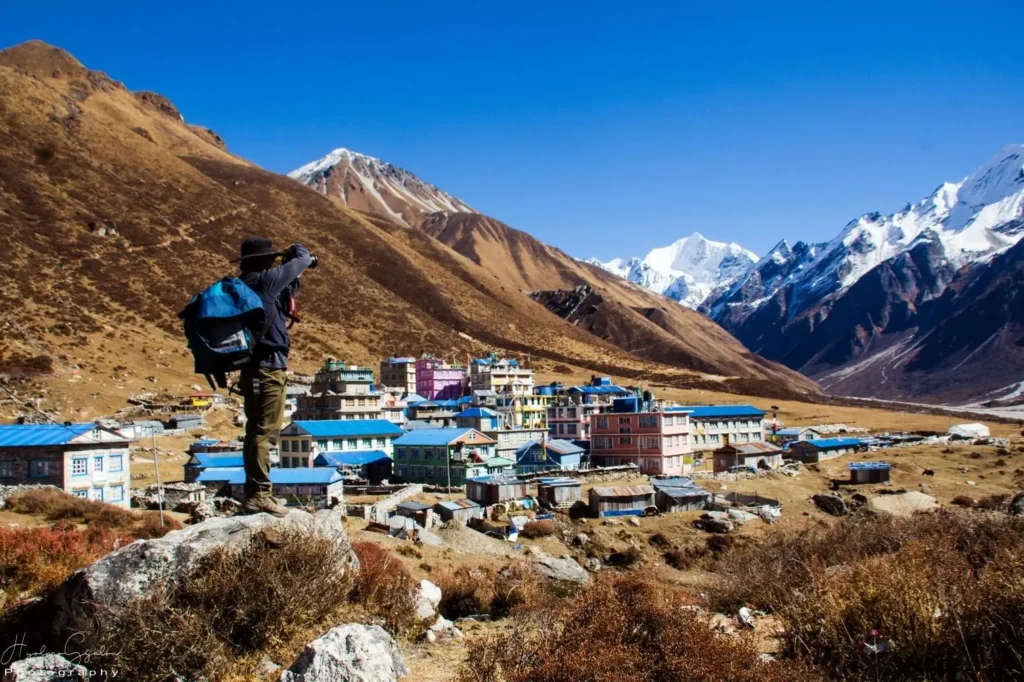 Conquering Mentok Kangri: A Climber’s Guide to Ladakh’s Crown Jewel - Mentok Kangri Climb Overview: Mentok Kangri, or simply "Mentok," is a majestic peak towering over Ladakh, India. Standing at a…
Conquering Mentok Kangri: A Climber’s Guide to Ladakh’s Crown Jewel - Mentok Kangri Climb Overview: Mentok Kangri, or simply "Mentok," is a majestic peak towering over Ladakh, India. Standing at a…  Experiencing the Climb of a Lifetime at Kang Yatse 2 - Kang Yatse 2 Climb Overview Kang Yatse 2 is an awe-inspiring mountain located in the Ladakh region of India. It…
Experiencing the Climb of a Lifetime at Kang Yatse 2 - Kang Yatse 2 Climb Overview Kang Yatse 2 is an awe-inspiring mountain located in the Ladakh region of India. It…  The Mountains Are Calling… Exploring Mountains and Beyond - Rediscovering my connection with the mountains - A journey into the unknown! It had been over 30 years since I…
The Mountains Are Calling… Exploring Mountains and Beyond - Rediscovering my connection with the mountains - A journey into the unknown! It had been over 30 years since I…  Camping Tips – 10 Tips to sleep better while camping - Camping is the answer, no matter what the question is! How to make your camping experience more comfortable and get…
Camping Tips – 10 Tips to sleep better while camping - Camping is the answer, no matter what the question is! How to make your camping experience more comfortable and get…

